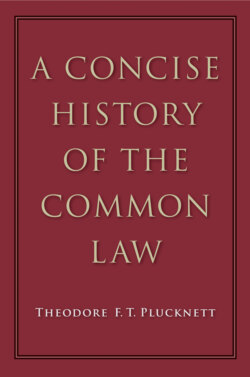Читать книгу A Concise History of the Common Law - Theodore F. T. Plucknett - Страница 87
На сайте Литреса книга снята с продажи.
THE SHERIFF’S TOURN: COURTS LEET
ОглавлениеWe have already mentioned the success of the sheriff in securing control over the hundred by appointing one of his underlings as bailiff of it; his influence was further increased by means of the “sheriff’s tourn”. Twice a year every hundred held an especially full meeting which was attended by the sheriff or his deputy, at which there came to meet him the reeve and the four best men of each vill in the hundred to undergo a searching examination at his hands. They had to lay before him their suspicions upon the members of their community; those suspected of grave matters were arrested by the sheriff and held for the King’s Justice, while less serious offenders were amerced by the sheriff. For the purposes of these specially important meetings twelve freeholders were appointed to revise the presentments by the vills.1 Upon the occasion of the sheriff’s tourn a thorough investigation was always made of the condition of the frankpledges, of which we shall speak later. By the close of the middle ages the hundred was reduced to insignificance, and the tourn lost its powers to the Justices of the Peace.2 Those hundreds which fell into private hands lasted longer, for their profits were sufficient to interest their owners, especially those who had the valued privilege of holding “courts leet” to replace the sheriff’s tourn. We shall return to the leet in the following chapter when dealing with seignorial jurisdictions.
